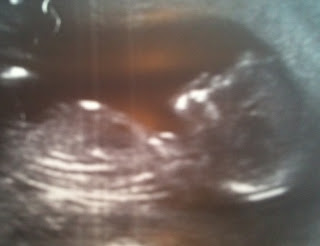Today is my birthday. I am now 39-years old and 20-weeks’ pregnant, which means it’s time for a champagne-free celebration and some words about maternal maturity.
“Elderly primigravida” is a term for women who have their first child at 35 or older. I learned this during my first pregnancy, and it made me feel sci-fi dangerous. I imagined myself strapped to a table in a post-apocalyptic lab with mad scientists toiling away at me, mankind’s last hope.
But I’m not such a rare breed. Twenty percent of women in the United States have their first baby after 35, and an increasing number are waiting into their 40s and beyond. This time around, I don’t let jargon scare me. You say “post-mature,” I say, “finally mature enough.” You “obstetrically senescent,” I say, “look, I’ve been busy with other stuff.”
For me, deciding the best time to have a baby wasn’t a matter of science or statistics, but of lifestyle and personal development. Parenting is something I only wanted to do if I was ready and able to make it my priority, to commit my time and focus. But there were other things I felt I had to do first, and I don’t regret waiting.
I’m not suggesting I did anything extraordinary instead of having children in the last decade, but I’m satisfied that I gave myself enough years to explore my options. If I haven’t climbed Kilimanjaro or gone to law school by now, it’s certainly not because I didn’t have the time.
My life has balance today that it didn’t have when I was younger, and I have the privilege of being a working mother who is not overly tormented by logistical tangles, emotional conflicts, major financial strains, or laments for what could have been.
But with me at 39 and the Irish fella 52, we are hardly “babies having babies,” and there are of course downsides to that, too: older women carry higher risks of having children with genetic and chromosomal abnormalities, such as cystic fibrosis and Downs syndrome.
At my last midwife appointment, I was asked whether I wanted an amniocentesis, a test for fetal defects. It’s a procedure in which a long narrow needle is inserted into the uterus and a fluid sample is taken. I opted to do it in my last pregnancy, because I was curious about everything to do with my fetus, and because it sounded straightforward enough.
But the uterus is the Fort Knox of organs. It is formed mostly of muscle and is fiercely protective of its contents. Puncturing it with a needle took a fair bit of force and was met with an angry contraction (well played, uterus!), and, moreover, it hurt.
Still, far more disturbing for us was watching our baby on the ultrasound screen scurry away from the pointy intruder, and being told afterward that if I didn’t bleed for two weeks, I probably wouldn’t miscarry.
The test can trigger miscarriage, and this gives a lot of women pause—particularly older women who worry about their declining chances of conceiving again. And because any abnormalities identified are untreatable in the womb if at all, your only options if a problem is identified are to continue on or terminate the pregnancy.
For these reasons, some argue that the test would have more benefit to younger women, who generally have more childbearing years ahead of them—and to whom more babies with Downs are actually born, simply because younger women have more babies overall.
We decided against the test this time. We don't want to take any level of risk with this baby—not because I fear looming menopause, but because learning of an abnormality would not be a deal breaker anyway.
Of course I want my baby to be healthy, and I already know my chances. A simple Google search will tell you that a woman of 39—regardless of health history or any other factor but age—has a 1 in 250 chance of having a baby with Downs. But I don’t think of this as a game of odds. I doubt any parent raising a child with this or any chromosomal disorder would tell you they gambled and lost.
So I’m celebrating my birthday with a bit of irony: I am statistically more likely to have a child with birth defects than I was ten years ago, but I also feel more personally, financially, and emotionally prepared to provide my child whatever he or she needs, for however long. Even if I'm the oldest mommy waiting in the schoolyard.







